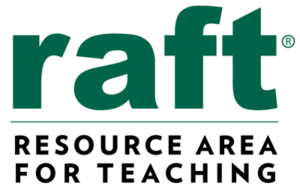Forest Ranger Measuring Tape
Measuring the diameter of a tree without cutting it down can be a bit tough. Rangers apply Pi to make these useful measuring devices.
Standards
Idea Sheets are cross-referenced to subjects listed in the Common Core, Next Generation Science Standards, and California Content Standards.
Mathematical Practices: 1. Make sense of problems and persevere in solving them. 2. Reason abstractly and quantitatively. 3. Construct viable arguments and critique the reasoning of others. 4. Model with mathematics. 5. Use appropriate tools strategically. 6. Attend to precision. 7. Look for and make use of structure. 8. Look for and express regularity in repeated reasoning. ||Common Core Mathematics||Grade 4||Mathematical Practices|||Mathematical Practices: 1. Make sense of problems and persevere in solving them. 2. Reason abstractly and quantitatively. 3. Construct viable arguments and critique the reasoning of others. 4. Model with mathematics. 5. Use appropriate tools strategically. 6. Attend to precision. 7. Look for and make use of structure. 8. Look for and express regularity in repeated reasoning. ||Common Core Mathematics||Grade 5||Mathematical Practices|||Mathematical Practices: 1. Make sense of problems and persevere in solving them. 2. Reason abstractly and quantitatively. 3. Construct viable arguments and critique the reasoning of others. 4. Model with mathematics. 5. Use appropriate tools strategically. 6. Attend to precision. 7. Look for and make use of structure. 8. Look for and express regularity in repeated reasoning. ||Common Core Mathematics||Grade 6||Mathematical Practices|||Mathematical Practices: 1. Make sense of problems and persevere in solving them. 2. Reason abstractly and quantitatively. 3. Construct viable arguments and critique the reasoning of others. 4. Model with mathematics. 5. Use appropriate tools strategically. 6. Attend to precision. 7. Look for and make use of structure. 8. Look for and express regularity in repeated reasoning. ||Common Core Mathematics||Grade 7||Mathematical Practices|||7.G.4. Know the formulas for the area and circumference of a circle and use them to solve problems; give an informal derivation of the relationship between the circumference and area of a circle.||Common Core Mathematics||Grade 7||Geometry||Solve Real-Life And Mathematical Problems Involving Angle Measure, Area, Surface Area, And Volume|||Mathematical Practices: 1. Make sense of problems and persevere in solving them. 2. Reason abstractly and quantitatively. 3. Construct viable arguments and critique the reasoning of others. 4. Model with mathematics. 5. Use appropriate tools strategically. 6. Attend to precision. 7. Look for and make use of structure. 8. Look for and express regularity in repeated reasoning. ||Common Core Mathematics||Grade 8||Mathematical Practices|||8.NS.1. Know that numbers that are not rational are called irrational. Understand informally that every number has a decimal expansion; for rational numbers show that the decimal expansion repeats eventually, and convert a decimal expansion which repeats eventually into a rational number.||Common Core Mathematics||Grade 8||The Number System||Know That There Are Numbers That Are Not Rational, And Approximate Them By Rational Numbers|||8.NS.2. Use rational approximations of irrational numbers to compare the size of irrational numbers, locate them approximately on a number line diagram, and estimate the value of expressions (e.g., p2). For example, by truncating the decimal expansion of v2, show that v2 is between 1 and 2, then between 1.4 and 1.5, and explain how to continue on to get better approximations.||Common Core Mathematics||Grade 8||The Number System||Know That There Are Numbers That Are Not Rational, And Approximate Them By Rational Numbers
1.2 Know common estimates of pi (3.14; 22/7) and use these values to estimate and calculate the circumference and the area of circles; compare with actual measurements.||CA Mathematics||Grade 6||03. Measurement and Geometry||1.0 Students deepen their understanding of the measurement of plane and solid shapes and use this understanding to solve problems.|||1.4 Differentiate between rational and irrational numbers.||CA Mathematics||Grade 7||01. Number Sense||1.0 Students know the properties of, and compute with, rational numbers expressed in a variety of forms.|||2.0 Students compute the perimeter, area and volume of common geometric objects and use the results to find measures of less common objects. They know how perimeter, area, and volume are affected by changes of scale.||CA Mathematics||Grade 7||03. Measurement and Geometry|||01.0 Students identify and use the arithmetic properties of subsets of integers and rational, irrational, and real numbers, including closure properties for the four basic arithmetic operations where applicable.||CA Mathematics||Grade 8 – 12||01. Algebra I|||08.0 Students know, derive, and solve problems involving the perimeter, circumference, area, volume, lateral area, and surface area of common geometric figures.||CA Mathematics||Grade 8 – 12||02. Geometry
- Grades 3-5
- Grades 6-8
- Math
